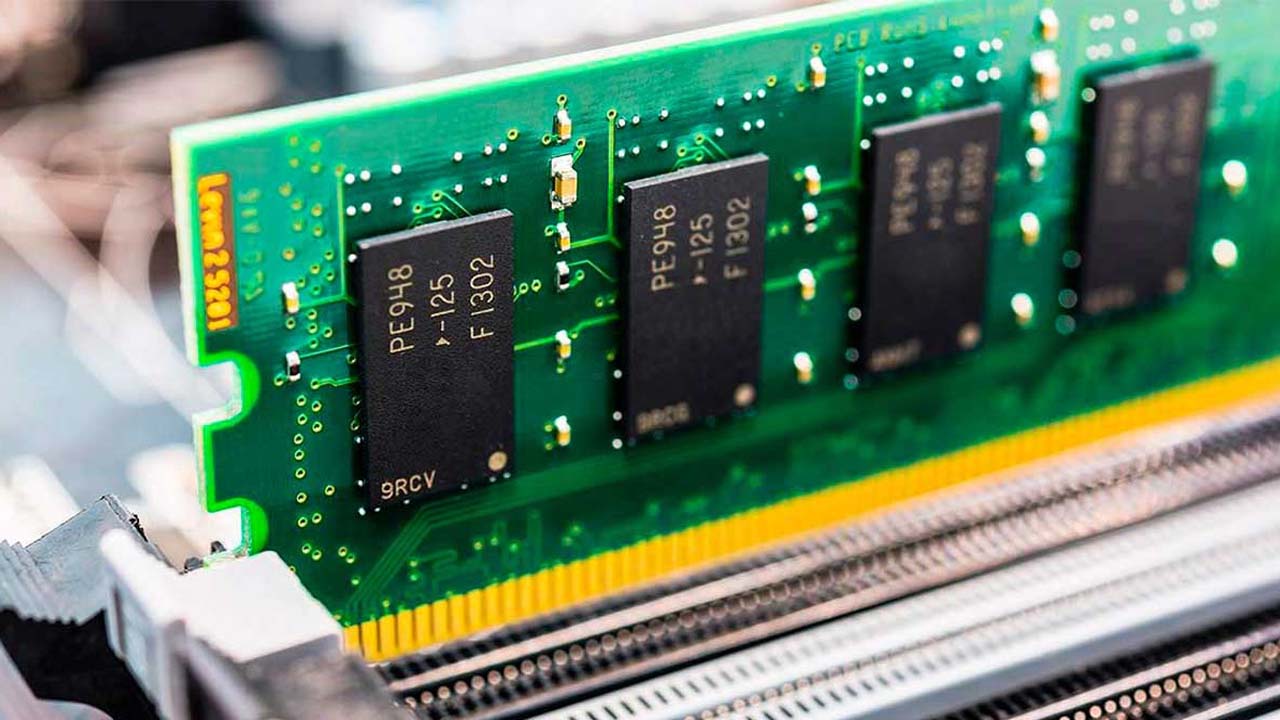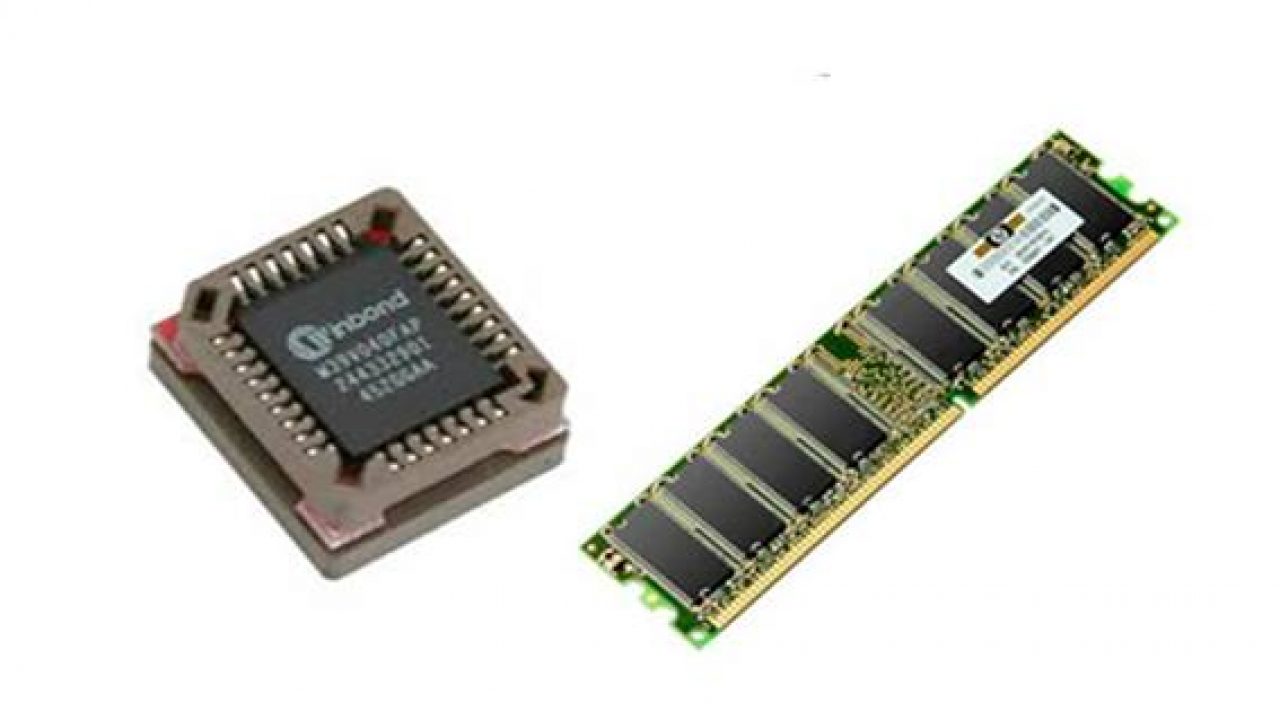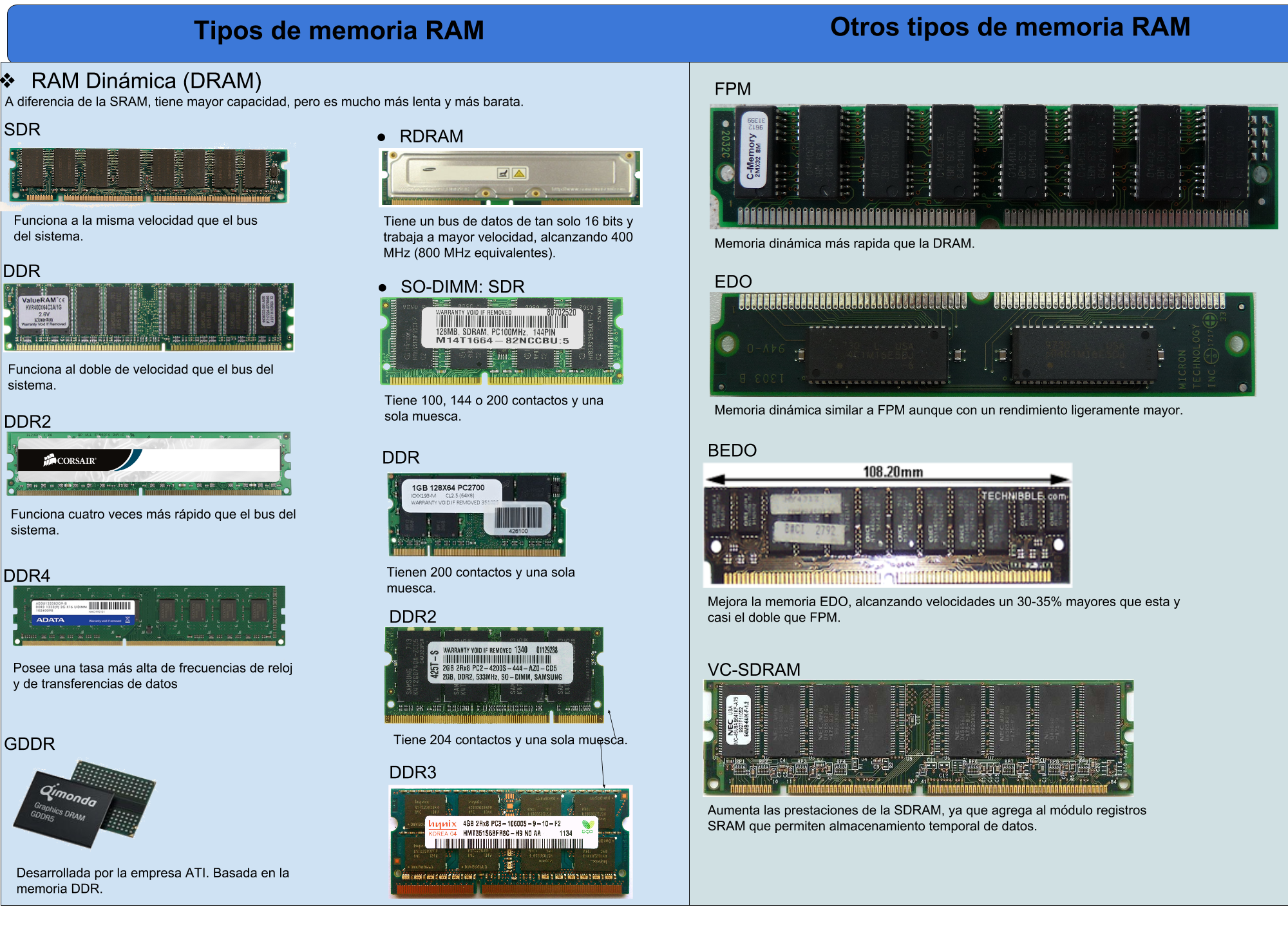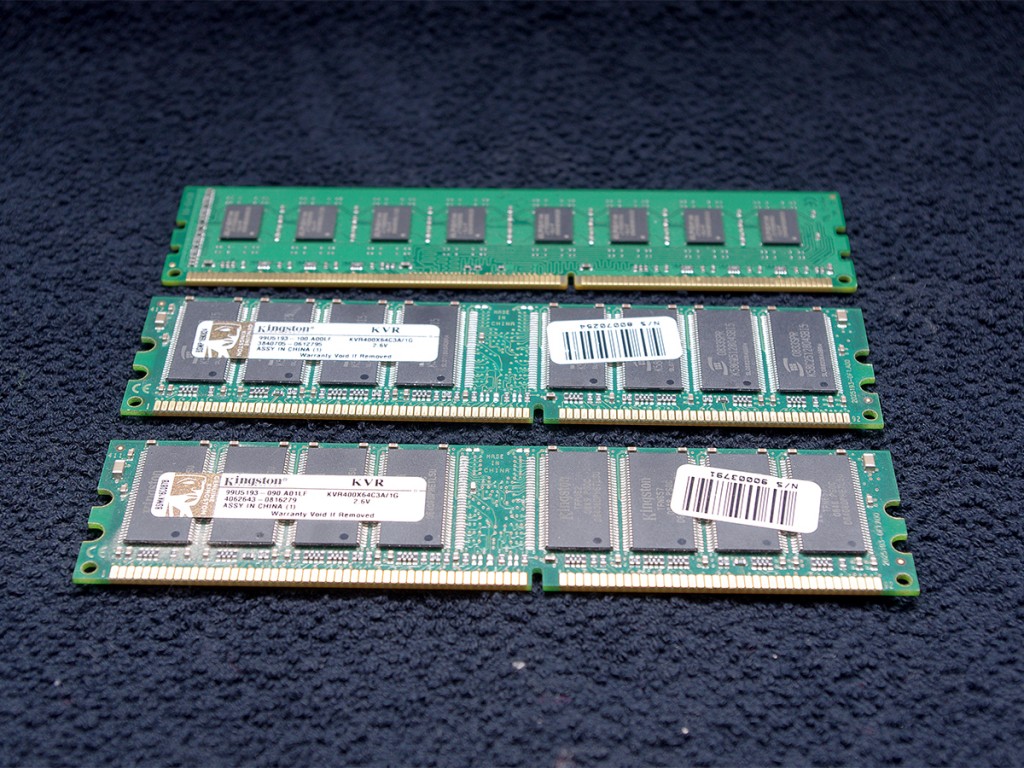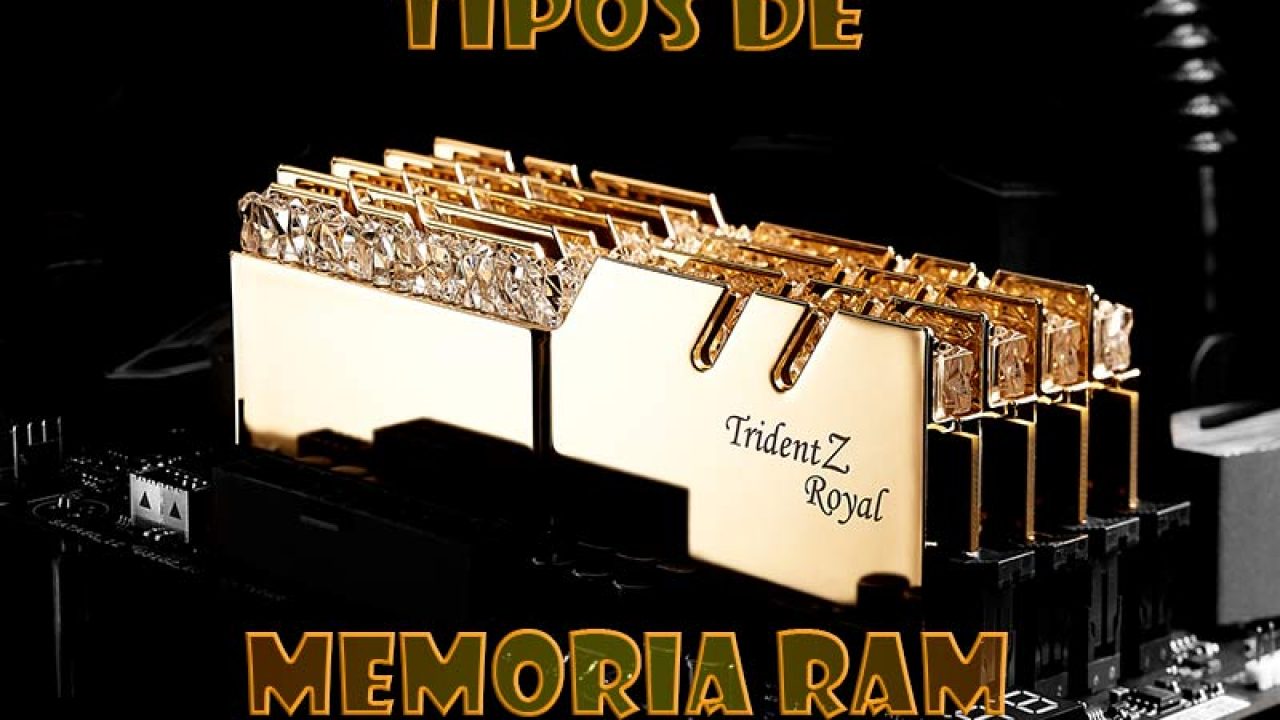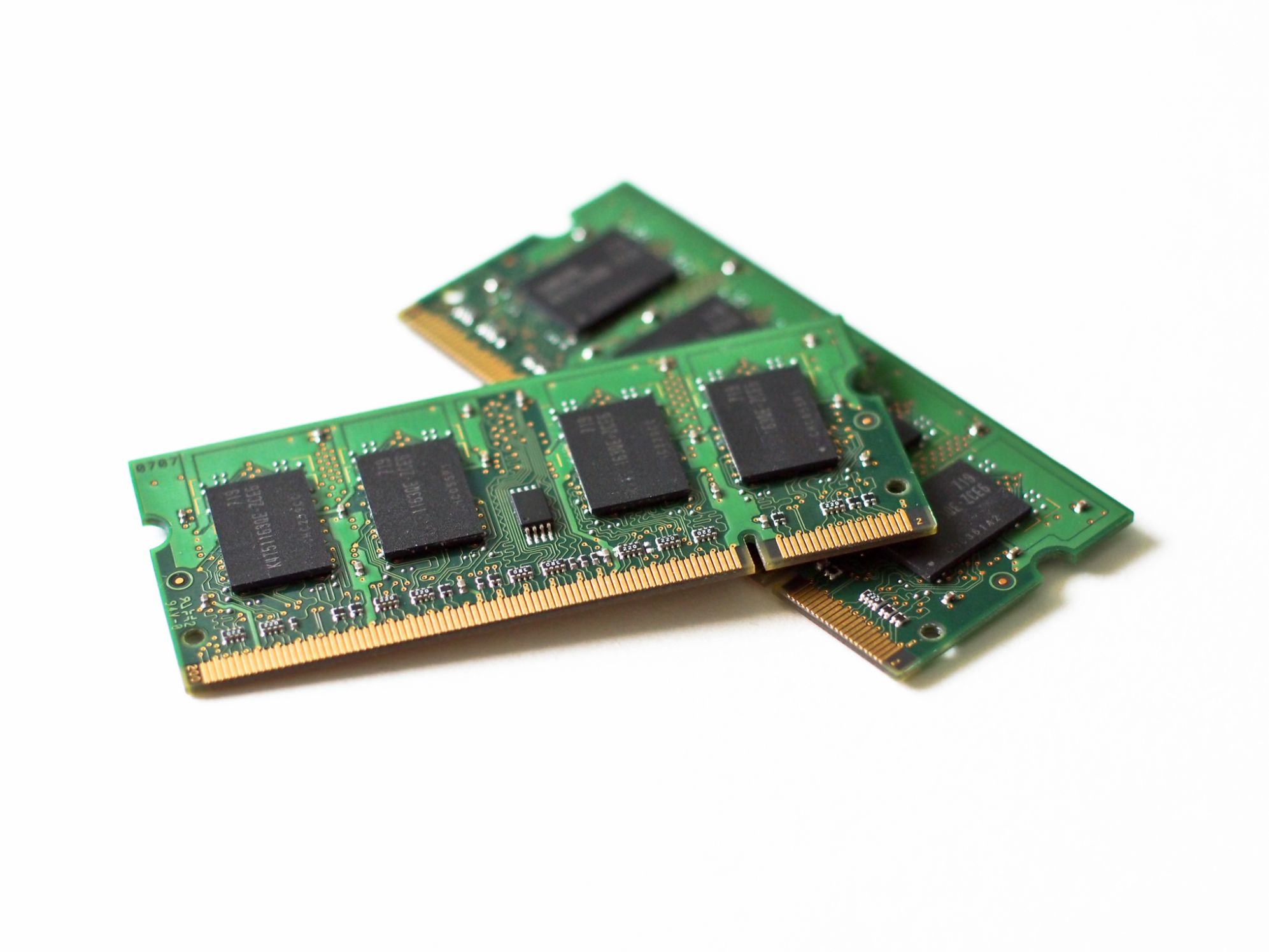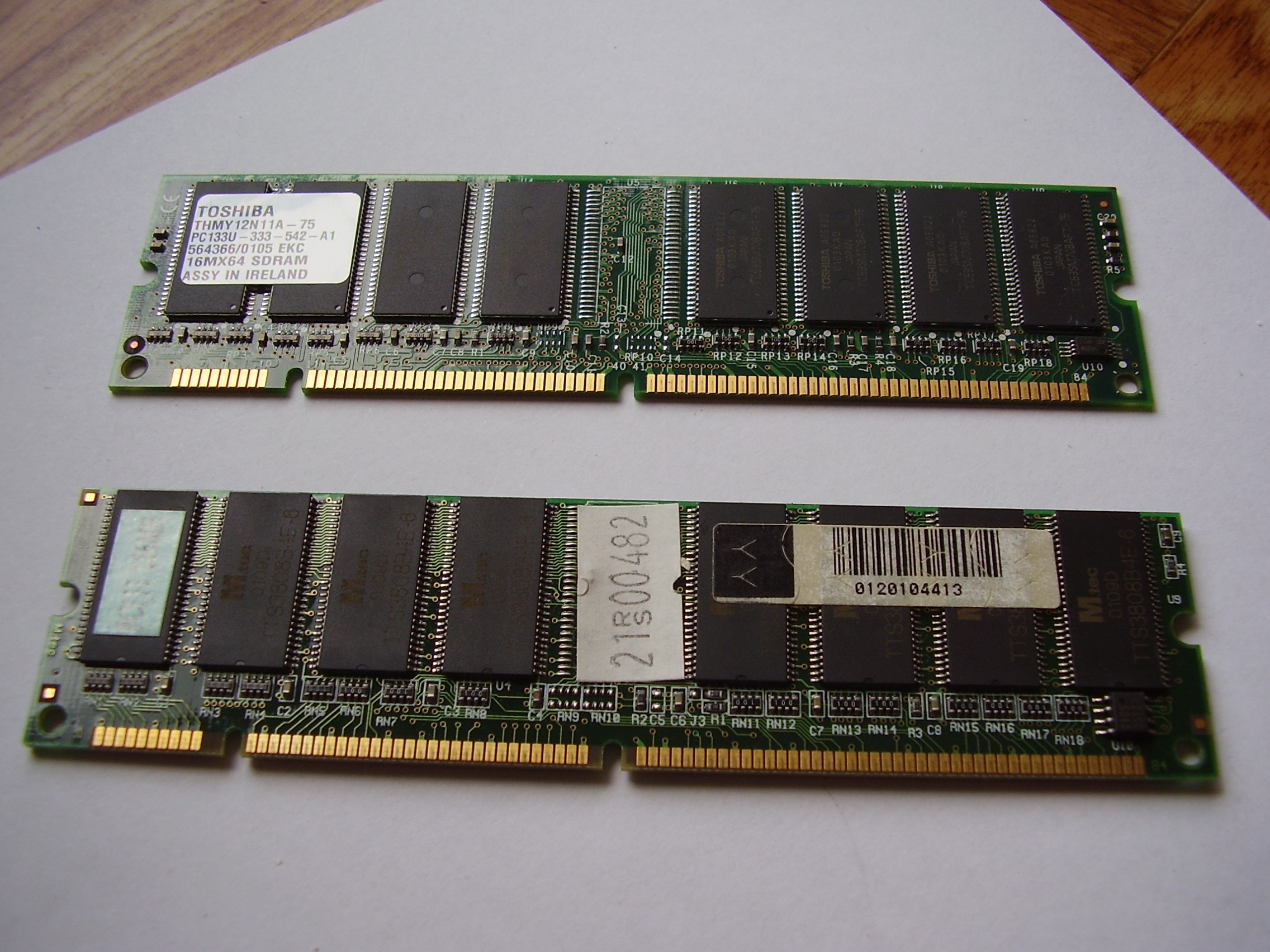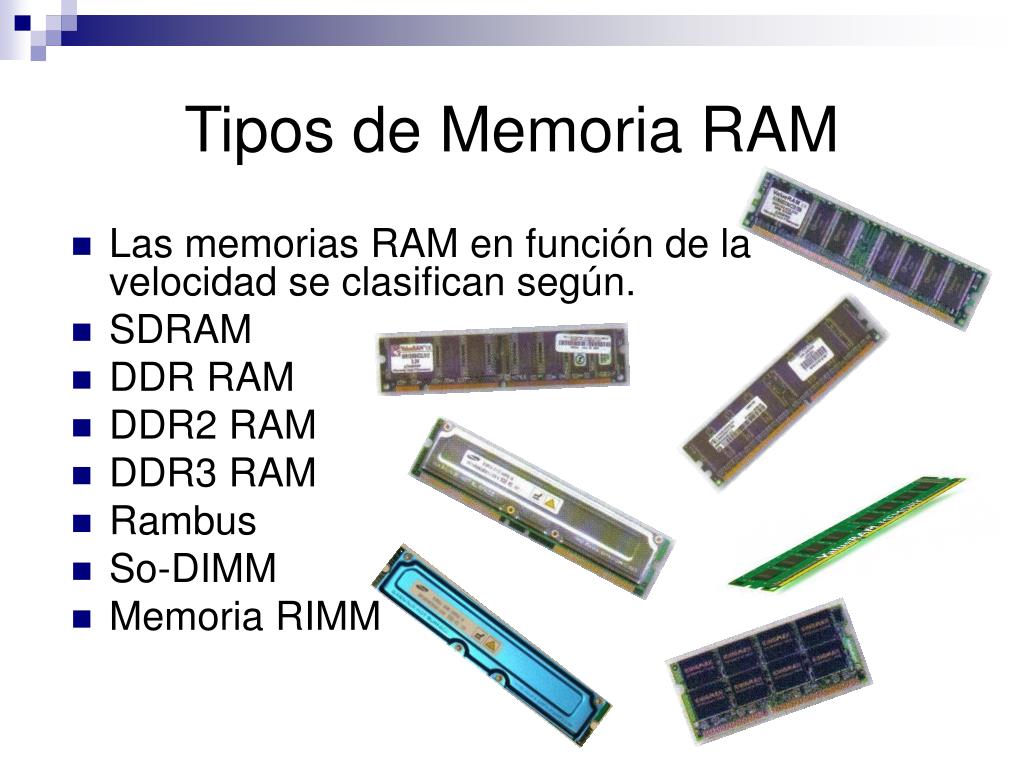The Ram memory types allow users to obtain better performance if the best quality is chosen, there are several models that allow the user to be varied. Reading this article you will know better everything related to this topic.
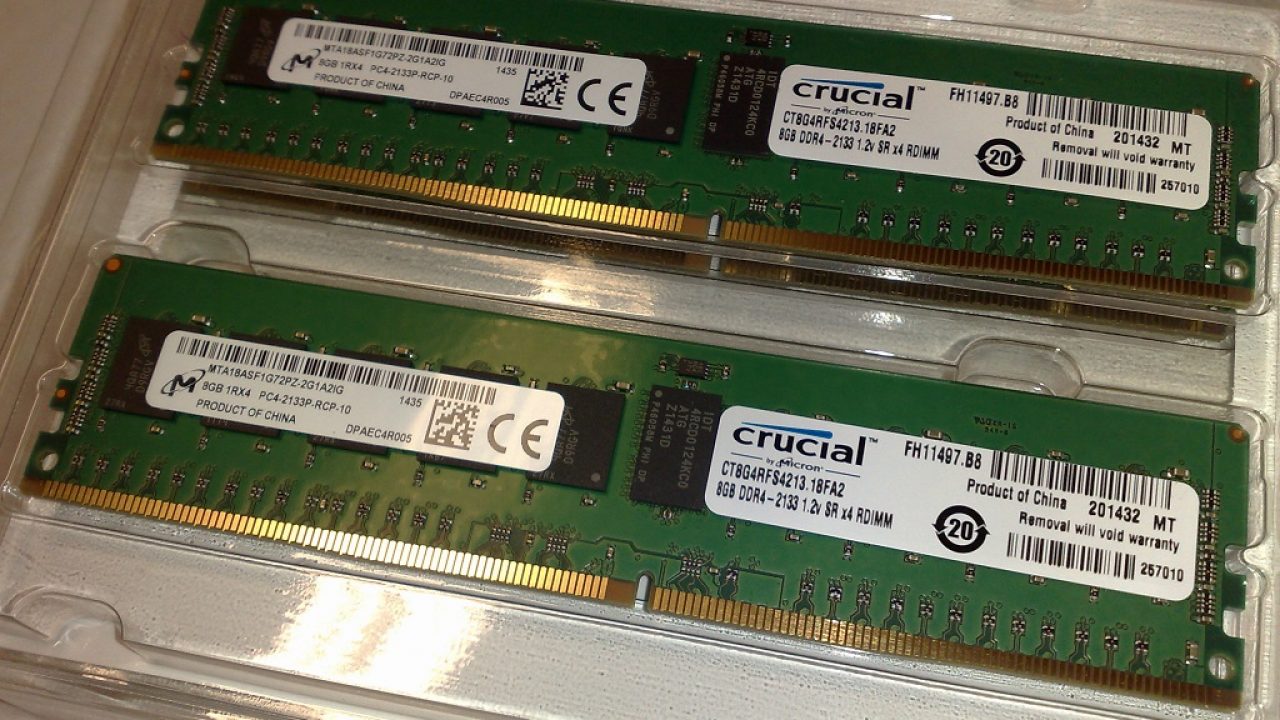
Ram memory types
Each of the memories found in computers is called the main brain, it allows them to operate and activate all the procedures. As a user of a computer equipment it is always important to know what type of memory can be most useful in our equipment.
Many types of RAM are available on the market that can help improve your capacity and computer performance. Likewise, these memories are obtained in smaller formats that are used for OS .
To make the equipment work it is necessary that it contain a RAM memory. But what does that really mean? We will see below everything related to this device that is considered one of the most important found inside the computer.
Concept
It consists of a physical type of access with which all computer equipment has to be able to carry out all the assigned operations. A RAM memory is of the type of storage called random, when it is damaged or its life span expires, it must be replaced or repaired.
There are few computers that have fixed RAM memory, however it is considered a random accessory that allows the general operation of the equipment. Each instruction that is executed in a PC is carried through the operating system to the RAM memory, so that it performs the assigned action.
The operating system is the bridge between the user and RAM. Inside it are stored all the programs that are executed or will be executed at some point in the processor. The instructions sent automatically locate the program to be executed, indicating in the RAM memory.
Its name in English is Random Access Memory, and it can be written and read in any of its memory locations regardless of an order of events or sequence. It is very volatile and perishable, that is to say that all its content is erased when the equipment is turned off, leaving it operational again when the equipment is turned on once more.
How to build a RAM
The construction of the types of RAM memory is done through the so-called encapsulations, it is a long process and where the technology of the microcircuits is used that gives life to the general formatting of the memory. Each package consists of a type of format that is assigned to the types of RAM in order to obtain different types of performance.
The encapsulations are a type of bases called PBC, where small chips are inserted in the form of electronic modules that make up various reception memories. It has several connections that are installed on the motherboard, which is generally a green insulator.
These micro-modules are the ones that make communication with the processor effective and allow to establish the operations that the operating system orders them. The modules have been in development for many years and have grown as a function of technological development. But let's see how these little devices work and what they are made of:
- RIMMs are small modules with more than 184 connection pins and a 16-bit bus, a bus is simply a small module that transmits data to various areas of the computer, it is made up of components such as cables, resistors and small capacitors.
- DIMM, is a capsule format that is used only for DDR memories in various versions, the data bus is 64 bits and can have up to 18 pins if used for SDRAM memories, and 184 pins for DDR memories, 240 pins for DDR2 and DDR3 memories and 288 pins for DDR4.
- SO-DIMM capsule, which is generally used by portable processors, is smaller and more compact than other capsules and its number of pins also varies depending on the type of memory, ranging from 144 pins for SDRAM memory to 260 pins for DDR4 RAM:
- SIMM, this type of format was widely used in old equipment, there are modules that contain between 30 and 60 pins and work with data bus from 32 to 64 bits.
- The Mini DIMM format has pins similar to those of the SODIMM, but with the difference that they are even smaller. They are generally used for small computers or mini laptops.
Various memories
Each computer or processor equipment maintains different characteristics, due to the various operations that its operating system can offer. Hence the importance of having several reports that adapt to the model of each team. Some are suitable for many similar equipment and others are simply made for specific equipment.
This type of memory is also used in various telephone equipment, video game consoles and some household appliances. They allow to provide a more optimal and efficient performance that in turn affects the durability of the equipment
There are currently only two types of RAM, depending on the characteristics of each one, it is possible to consider their use in some type of equipment. Regardless of the brand, these memories are mass-manufactured for distribution in new equipment or to repair damaged ones.
SRAM
Known by its acronym as "Static Random Access Memory" in Spanish Static Random Access Memory, is a type of memory that uses semiconductors and has the ability to keep data intact. No need to use cooling circuits.
This type of memory must be constantly receiving power to avoid problems. They are called NVRAM memories or what is the same as Non-volatile Random Access Memory or non-volatile RAM. And the memories MRAM in its initials Magnetoresistive Random Access Memory or magnetic RAM. They differ in the way they transmit and receive information.
Random type memories are handled under the concept of being static; in other words, they work faster and are more reliable than DRAM memories. Simply because it is directly exposed and related to cooling. This allows them to keep the information for much longer.
They are built based on flip-flop type circuits, which allows them to receive very fluid current from one side to the other without the need for any of the transistors to stop. They work continuously without limiting the energy flow. This helps the data to be stored in the circuit without the need for refreshing to keep it there.
Their only flaw is that they require a bit more power consumption to process the data, but it's worth it as they are more secure. In this way the data can be stored in this circuit without the need to be constantly refreshed. These memories require more power, but are faster, but also more expensive to manufacture. They are typically used to build the processor cache.
DRAM
In English they are called Dynamic Random Access Memory which translated is Dynamic Random Access Memory. Its technology is based on the use of various capacitors. These are losing charge little by little and need a cooling through another circuit; which allows them a review of the situation and then replenish the charges.
They were founded in the 60s and it is the most widely used type of RAM today. It allows to create modules with very large ranges of density. This helps to position data faster. There are several types called synchronous ABRAMs, whose meaning in English is, Random Access Memory and asynchronous DRAMs called Synchronous Dynamic in English.
They are composed of silicon semiconductors, they have components such as capacitors and transistors. They allow data to be stored inside a memory cell that is fed through the capacitor. This is done hundreds of times so that the data is stored, its content is eliminated when the processor is turned off.
At the beginning they were called asynchronous because there was no element that will synchronize the frequency of the equipment with that of the memory. Little by little, the synchronous calls that a device contains that allows them to synchronize the data with the processor were created. Making operating procedures faster and safer.
It has the advantage that they are cheaper and very simple, they are built faster and they are not so complicated. Their disadvantage is that they are a little slower, but their economy and performance allow them to be positioned in the market.
These memories are built in different types that are used to adapt them to the processors that exist on the market. The developers of these memories are looking for a breadth that can find a way to lower the production costs of computers.
FPM-RAM
It reads Fast Page Mode RAM, they were used in the first Intel Pentium computers. They were capable of sending a single information in exchange for receiving various forms of addresses simultaneously. The advantage was that the response was very poor, limiting the sending and receiving of information and individual addresses.
EDO-RAM memory
Called in English Extended Data Output RAM, it was part of the evolution of the previous one, for which it significantly improved its performance. This memory had the ability to receive alternate addresses simultaneously, without having to wait to receive other data.
BEDO-RAM memory
Called in English Burst Extended Data RAM. EDO RAM is also an evolution, and allows access to various memory locations. To avoid data bursts that are generated during each clock cycle that the processor contains. Although very efficient, it never managed to position itself in the market
Rambus-DRAM memory
It was one of the most innovative creations when it comes to RAM memories. It helps to improve the bandwidth as well as the frequency, which could go above 1000 MHz, with 64-bit width. Currently they are also in disuse, it is unknown why.
Synchronous type memories SDRAM
When we speak of synchronous memories, a difference is being considered with respect to other memories. This type of memory has an internal clock which synchronizes the frequency of use with the processor. The action makes it possible to improve efficiency times in the work and processes carried out by the team.
They were the first memories created and developed in DIMM encapsulation formats with 168 contacts. Computers such as the AMD Athlon and Pentium were first used more than 10 years ago. Nowadays they are used in some equipment and it has different variants.
DDR SDRAM
It was the first version of the synchronous memories, they were developed from the module mount or DIMM packages with 182 pins and the SODOM model with 200 pins. They ran on just 2,5 volts and their clock operates at a speed that ranges between 100 MHz and 200 MHz.
These memories implemented the Dual Channel system, that is, they allowed the RAM memory modules to be divided into two slots. This made it possible to exchange data with the bus simultaneously. In 64-bit modules they had the possibility of exchanging with a 128-bit bus. Each memory comes in different models that are configured based on the clock speed.DDR2 SDRAM memory
It was the second version of DDR memories, and its innovation was that it had the ability to double the transferred bits not to 2 but to 4, for each clock cycle. They worked on 240-pin modules of the DIMM type. They worked with 1,8 volts, which causes a lower consumption than the DDRs. These memories have several variants that come in models where only the encapsulation is modified.
SoDIMMs and MIni DIMMs are models made solely for notebook computers with a minimum consumption of 1,5 volts. These memories do not support the insertion of another DDR memory, there is no compatibility between them. Like the previous ones, the configuration varies depending on the MHz of the clock.
DDR3 SDRAM
The development of synchronous memories has not stopped and the third version of DDR memories are developed in order to improve energy issues, the efficiency improves significantly with this third version. It works only with a voltage of 1,5 for the desktop PC version with a 240-pin DIMM type module.
The interesting thing is the capacity for each module that reaches 16 Gb, but it is not compatible with the other memory specifications either. However, these memories have the condition that when the speed increases they tend to decrease the efficiency, but it maintains the speed in a higher percentage than the previous versions.
It was developed mostly for use in laptops and mini-laptop-type computers. That they are equipment of low consumption and of smaller dimensions. The various models of this version of synchronous memory are the DDR3 are used in models of desktop computers, sAlways with DIMM module.
There are also DDR3L versions, which work with just 1,3 V and are specifically aimed at laptops. They also use DIMM modules in their So DIMM and Mini DIMM versions. The DDR3U model is also on the market, which uses 1,2 V and was developed to be used in Tablets and Smartphone cell phones.
Synchronous memories of this type allow to use very little voltage, not exceeding 1,2. They are considered the most demanded in the memory market today. In this group there are also the so-called LPDDR memories, which consume a voltage of 1,2 and are also aimed at cell phones and smart tablets. The models in each version may vary according to the specifications that the equipment manufacturer needs.
DDR4 SDRAM
The fourth version is the one that is being developed with the most demand and is used today. They operate at a higher frequency and mount in 288-pin DIMMs. The efficiency is considerably higher, they work with 1,35 volts for desktop computers and 1 volts for laptops.
In high-performance equipment, memories of this type are introduced that consume a voltage of 1,45 volts and a transmission speed of 4.600 MHZ. These memories are capable of operating in three and four channels and can be mounted in modules that even reach 32 Gb. There are four types of DDR4 memory, let's see:
- DDR4L, are memories also designed for laptops and servers, mounted on 1,2 volt So DIMM modules with variable pins.
- DDR4U, very similar to the previous one, are used exclusively for servers, they operate with 1,2 volts and are of little use since their limitation for manufacturing is limited to servers only.
- LPDDR4, they work exclusively for Smartphone cell phones, they work with 1,2 volts that can vary according to the conditions of the cell phone at 1,05 volts, they do not have as much speed as the desktop DDR4, it fulfills its function of efficient menare. It maintains a speed of 1600 MHZ, although the LPDDR 4E version can reach 2100 MHZ.
The models and variants of these memories are manufactured taking into account the clock speed as a function of MHz. Clock frequencies ranging from 800 MHz to 2133 MHZ are then appreciated. This speed is directly proportional to the bus speed and transfer capacity, where both also increase.
GDDR memories
GDDR memories are an alternative to DDR RAM types. In addition to traditional RAM memories, they are called Graphics Double Data Rate in English. Designed not for graphics cards, with standards similar to DDR, so that they have the ability to send from 2 to 4 bits per clock cycle.
Because of their quality and efficiency, they are a bit more expensive than the rest of the RAM guys. Compared to the rest of the normal DDRs this type of memory is a type of evolution that increases the graphic conditions considerably. But let's see the specifications of these memories
- GDDR Basic They came onto the market for the first time more than 10 years ago and are based on DDR2 type memories, use frequencies ranging from 166 MHz to 900 MHZ and were used in equipment with standard capabilities.
- GDDR2, also based on DDR2 memories, were a more advanced type of memory than GDDR basic. The frequency was 800 MHz with a bandwidth between 8 and 16 Gb per second.
- GDDR3, designed by certain companies to work on video game cards like PlayStation 3 and Xbox 300, also served other functions. They had a frequency range between 166 MHz and 800 MHz.
- GDDR4, these models had a technology based on DDR3 memories, they did not have much acceptance in the market and were replaced by GDDR5. DDR4 memories were used in AMD graphics very similar to GDDR 3.
- GDDR5, its arrival allowed to give a more dynamic development, is the most used by the servers and manufacturers of PS4 and Xbox One X. They have a bus width in the order of 20 Gb and a frequency of 8 Gbps.
- GDDR5X, is an evolution of the DDR5 version obtaining a high frequency of 11 Gbps and its bandwidth of 484 Gb per second, the bus supports up to 352 bits. It is used for graphics cards in current video games.
- GDDR6, considered the most up-to-date memory for graphics cards, is very expensive and its graphics definitions are excellent. They achieve a frequency of 15 Gbps and a bandwidth of 672 Gb / s the bus is 324 Bits, it is considered the most powerful desktop card that has been manufactured.
Differences between RAM and ROM memory
ROM memories are made up of memory circuits that only allow information to be read. They also store both elements and data permanently. Unlike RAM which is always open to manipulation and retrieval of information, RAM is closed.
However, the data in the ROM memory can be recovered but not manipulated and intervened. RAM memory is open to indiscriminate access to information, from any position or moment; while ROM requires sequential access to it. RAM memory has higher speed while ROM memory is slower and data is sent in one go.
Another difference between these two memories is that RAM memory is removable, you can even increase its capacity. On the contrary, the ROM memory modules were soldered and attached to the motherboard; they cannot be removed or manipulated by the user. The manufacturer firmly places the memory making it difficult to manipulate.
Features
The types of RAM memory have different characteristics; its role varies depending on the specifications of the computer, console, or server manufacturer. They are designed in order to offer optimal performance in each form of use that you want to give it. Hence, certain conditions and characteristics can be appreciated that can help the reader to know which is the most suitable for their equipment or need.
When talking about random access, it is considered an action that is based on defined time and moments. The types of RAM memory are reset when the computer or server is turned off. The importance of synchronized memories is that they control data and can be manipulated.
They are designed to describe the type of reading and writing that is done in them. Its operations turn out to be faster, which leads to consider the condition and type of memory for a specific computer. The modules as we saw previously, give life to the memory operationality. High-tech elements are incorporated that allow greater speed in operations.
The most important characteristic is the variety for which they were developed. We look at how they can be used in multiple applications such as video games, household appliances, vehicle computers and various ways that make life more efficient and comfortable.
The types of RAM memory are built in order to obtain fast and efficient synchronization with the operations ordered by the user. This efficiency is measured at speeds that vary according to computer conditions.
Remember that some may have limitations due to the conditions of the manufacturers. The most important characteristics of these memories consists of the physical format and the capacity in the speed to execute actions. Within the memories of this type that can be found in the current market, there are various types of RAM memory.
They differ in their physical format and vary according to the number of pins. As well as the way in which it is manufactured based on the encapsulates (Seen in this article). The capacity and speed they manage to develop is also taken into account. In the execution of tasks.
What are the types of RAM required?
When you buy a computer equipment, you buy a video game, a Smartphone or any other device that is designed with the highest technology. You are not only buying a technological device but a system in which various forms of procedures are inserted. Which allow to give speed and efficiency to what is desired.
It differs from artifacts and equipment made in another era, since they perform faster and more efficient superior actions; making current life more comfortable. We are in the presence of an artifact that contains a memory of type RAM
Each computer contains within its components this memory that many call computers. They are the brain to perform actions. When one of these memories is damaged it is important to replace them, few can be repaired and are designed for durability and high performance.
Knowing the type of memory is important and the most advisable thing is to go to the manufacturer's manual and locate the memory that the equipment has. In the case of computers it is very simple. Internally and by loosening some screws, the equipment can be opened avoiding touching other parts, we observe the presence of a yellow and black card.
They are easy to identify and have a small marking inserted that indicates its model. RAM memory cards can generally get damaged after a while. We always recommend going to specialists who indicate what type of memory to replace.
The memory modules for desktop and laptop computers are based on DIMMs (also seen in this article). They represent the random access synchronized with the bus clock, so that the processes develop more efficiently. These characteristics are what make a team more efficient when some type of problem is observed, it is good to know the model with which it is available.
In portable computers we can appreciate the model in two ways, directly by opening the screen and looking for the characteristics of the equipment. The other way is to open the bottom part and generally next to where the stack is located a slot is observed. When opening it, we directly observe the RAM memory card. Our recommendation if you observe any anomaly in the equipment, it is good to take it to the technical service.
Care and Maintenance
The different types of RAM memory have a different way of operating, this depends on the conditions and characteristics of the computer. In some cases, the replacement of the RAM memory is not the most appropriate and it often happens that a memory that is not indicated is inserted.
In these cases it is always advisable to go to specialists. To avoid this type of situation that can cause damage and replacements to the types of RAM memory. Eventual memory maintenance is recommended. This service is included in the equipment software and everyone can easily and easily replace it.
The life of a RAM memory depends on the use and quality of it. Today there are thousands of RAM memory manufacturers that use low-quality materials to reduce costs. The consequence of this can be poorly efficient and underperforming RAM. Sometimes it can even cause damage to equipment.
Dust is the number 1 enemy of RAM memories, if it is constantly exposed to dust it will surely suffer some damage, hence the importance of its maintenance. But let's see step by step how we should clean and take care of the types of RAM.
The first step is to identify where the memory is located, as well as its model and that of course the computer is completely turned off and disconnected from any peripherals. When we are in the presence of the card where the memory is located, it is good to make contact with the hand to eliminate some type of static energy that is dispersed.
However, it is advisable to use latex gloves. In a very careful way the memory is disassembled gently by removing it from the pins, generally the memories are adapted to small levers that are softly spoken and easily removed.
You begin to clean the parts of the contact with a very soft brush, if you get an electronic contact cleaner it is good to use it. The idea is to eliminate the dust that can accumulate and stick due to the heat. Remember that excess temperature and dust slows down the equipment procedure.
The cleaning process is relatively simple, you just have to do it with great care. The parts that you are going to clean can be damaged as they are sensitive to human skin, which can expose some type of static charge and damage it.
Many people have done this type of maintenance and have not had any problems, so if you want to get better performance with memory types, start now and enjoy greater computer efficiency.
If you liked this information, we invite you to visit our technological blog by clicking on the following links, which also contain information related to the topic discussed in this article.
